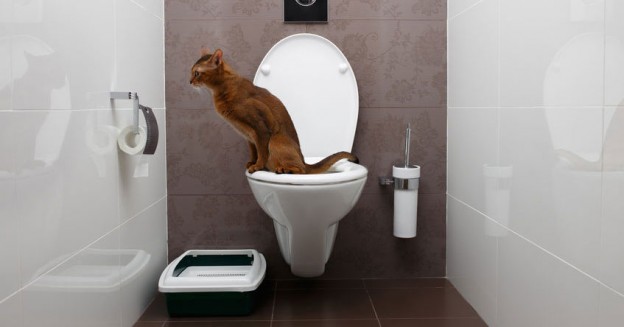What're your ideas with regards to How to Dispose of Cat Poop and Litter Without Plastic Bags?
Introduction
As pet cat proprietors, it's necessary to be mindful of exactly how we deal with our feline friends' waste. While it may appear practical to flush feline poop down the commode, this method can have detrimental consequences for both the setting and human health.
Alternatives to Flushing
Thankfully, there are much safer and much more liable means to dispose of feline poop. Consider the complying with options:
1. Scoop and Dispose in Trash
The most common method of throwing away pet cat poop is to scoop it right into a naturally degradable bag and throw it in the garbage. Make sure to make use of a committed clutter scoop and deal with the waste immediately.
2. Usage Biodegradable Litter
Choose biodegradable pet cat clutter made from materials such as corn or wheat. These trashes are environmentally friendly and can be securely dealt with in the garbage.
3. Bury in the Yard
If you have a backyard, think about hiding feline waste in a marked area away from vegetable yards and water resources. Make certain to dig deep enough to stop contamination of groundwater.
4. Install a Pet Waste Disposal System
Invest in a family pet garbage disposal system particularly developed for cat waste. These systems utilize enzymes to break down the waste, decreasing smell and ecological influence.
Health and wellness Risks
Along with ecological issues, flushing cat waste can also present health threats to humans. Feline feces might consist of Toxoplasma gondii, a bloodsucker that can cause toxoplasmosis-- a possibly serious ailment, specifically for pregnant females and people with damaged body immune systems.
Ecological Impact
Flushing cat poop introduces hazardous virus and parasites into the water system, posturing a substantial risk to water environments. These pollutants can adversely affect marine life and compromise water top quality.
Conclusion
Responsible family pet possession expands beyond giving food and sanctuary-- it also includes proper waste administration. By avoiding flushing feline poop down the bathroom and selecting alternate disposal techniques, we can lessen our environmental impact and safeguard human health and wellness.
Why Can’t I Flush Cat Poop?
It Spreads a Parasite
Cats are frequently infected with a parasite called toxoplasma gondii. The parasite causes an infection called toxoplasmosis. It is usually harmless to cats. The parasite only uses cat poop as a host for its eggs. Otherwise, the cat’s immune system usually keeps the infection at low enough levels to maintain its own health. But it does not stop the develop of eggs. These eggs are tiny and surprisingly tough. They may survive for a year before they begin to grow. But that’s the problem.
Our wastewater system is not designed to deal with toxoplasmosis eggs. Instead, most eggs will flush from your toilet into sewers and wastewater management plants. After the sewage is treated for many other harmful things in it, it is typically released into local rivers, lakes, or oceans. Here, the toxoplasmosis eggs can find new hosts, including starfish, crabs, otters, and many other wildlife. For many, this is a significant risk to their health. Toxoplasmosis can also end up infecting water sources that are important for agriculture, which means our deer, pigs, and sheep can get infected too.
Is There Risk to Humans?
There can be a risk to human life from flushing cat poop down the toilet. If you do so, the parasites from your cat’s poop can end up in shellfish, game animals, or livestock. If this meat is then served raw or undercooked, the people who eat it can get sick.
In fact, according to the CDC, 40 million people in the United States are infected with toxoplasma gondii. They get it from exposure to infected seafood, or from some kind of cat poop contamination, like drinking from a stream that is contaminated or touching anything that has come into contact with cat poop. That includes just cleaning a cat litter box.
Most people who get infected with these parasites will not develop any symptoms. However, for pregnant women or for those with compromised immune systems, the parasite can cause severe health problems.
How to Handle Cat Poop
The best way to handle cat poop is actually to clean the box more often. The eggs that the parasite sheds will not become active until one to five days after the cat poops. That means that if you clean daily, you’re much less likely to come into direct contact with infectious eggs.
That said, always dispose of cat poop in the garbage and not down the toilet. Wash your hands before and after you clean the litter box, and bring the bag of poop right outside to your garbage bins.
https://trenchlesssolutionsusa.com/why-cant-i-flush-cat-poop/

We hope you enjoyed reading our part about Don’t flush cat feces down the toilet. Thanks so much for taking the time to read through our content. Sharing is good. Helping others is fun. Thanks a lot for going through it.
Click Here